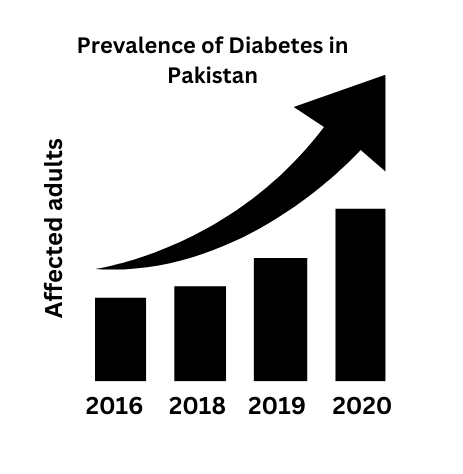Bioinformatics meet Nanotechnology: Designing smarter Nanorobots for precision medicine
In this ever so evolving world of science, the collaboration of Nanobiotechnology and Bioinformatics is making ground breaking innovations. If we manipulate the computational power of Bioinformatics and the magical tools of Nanobiotechnology, we can develop and design smarter nanorobots with far-reaching ability to promise advancements in diagnosis, treatment and drug delivery. So to tackle one of the raging problems i.e. Diabetes in developing countries like Pakistan, such application should be developed, those that not only deal with traditional insulin therapy issues but also manage diabetes.

The convergence of Nanobiotechnology and Bioinformatics
While the Bioinformatics focuses on the interpretation of biological information such as protein structures, genomic sequences and metabolic pathways…
Nanobiotechnology, on the other side, incorporates nanoscale materials and devices to the biological system. The harmony of both these fields can give rise to such nanoscale systems, that are biologically compatible and driven by programming data.
Nanorobots are such tiny devices, which are capable of surviving in the biological environment at molecular level, can be considered a prime example of such collaboration. For example, with the help of bioinformatics tools we can design such biomarkers which are disease related and have the ability to be located by nanorobots. The nanorobots to be use, can interact with the affected tissues and cells.
Bioinformatics-Powered Innovation of Nanorobots for Diabetes
Majorly focusing on Diabetes Type 2, this disease is characterized by the elevated blood sugar levels due to improper functioning of the pancreas, genes, hormones and lifestyle. Type 2 diabetes is the most common and usually occur in adults. Happens, when the body is not making enough insulin or have become resistant to insulin itself. Access to affordable treatments like insulin injections and tablets, are the only possible treatments for it right now. Scientist aim to globally halt rise in obesity and diabetes by 2025. The provided treatment like Insulin injections have some limitations to it…There is a need for strict dosage control, is invasive and patient compliance is to be taken under consideration as well. Such treatment proves to be a hassle for common people, to tackle with all these unnecessary treatment measures, development of Nanorobots can be a promising solution. It can provide alternate ways to introduce insulin in the cell without invasion of the skin.
How cells take in Glucose?
To tackle with treatment problems of diabetes, we should know how cells take in Glucose. When cells are in low energy state, the need for glucose intake rises up. Certain transporters GLUTs are present on the cell membrane which helps cell to take in the Glucose. A specific food is consumed, Glucose enters the bloodstream. This signals the pancreas to release insulin, it binds to the receptors present on the respective cell surface. The GLUT proteins assemble and make channels for insulin to travel in.

Figure: Different types of GLUTS and Glucose intake
What are the steps to be taken to achieve this idea?
Use of Bioinformatics and literature to understand the respective disease
The tools of Bioinformatics are to be used to analyze the omics data to identify the target mechanism. For instance, researchers have identified that the activation of Amp-activated Protein Kinase A (AMPK) and GLUT 4 are crucial for Glucose uptake.
Platforms like KEGG and STRING are able to map these pathways, to discover potential interventions points.
2. Designing Nanorobots
Use of Bioinformatics insights can help create customized nanorobots to control the pathway to the disease.
3. Approaches
To work on this idea, there is a need to think of possible approaches and ways. Here are two of them discussed,
Firstly, we want to make sure the Glucose enters cell without the need of insulin at all. To minimize the need of insulin, think of a way to make such nanorobots which directly target the GLUT transporters and forcefully open the channel by stimulating their movement in the cell membrane. Following is the visual representation the given approach;

The second approach is, designing of such nanorobots which release insulin like signaling molecules which activate GLUT( even under insulin resistance conditions). These nanorobots will release chemical signals which will increase GLUT expression in cells and activate GLUT translocation in cell membrane. This will facilitate Glucose entry in the cell without the need to use insulin.
Activation of kinase enzyme can be one such example of chemical signalling for GLUT transporters. The release of Amp activated Protein Kinase A can be promising to open channels for GLUT4.

Keeping in mind these approaches can help designing precise nanorobots.
4. Biocompatibility tests and Functionality
Computational modelling and simulation tools can predict how these nanorobots will interact with immune system in human body. Computational modelling is going to ensure that the chance of getting rejected by immune system is minimal. In preclinical investigation, designing of nanorobots can be fine tuned using intelligent algorithms that can stimulate nanorobots working in different realistic scenarios.
Barrier and Future Directions
It appears that the marriage of Bioinformatics and Nanobiotechnology is capable of difficulties and challenges. For example, solving ethical problems related to nanobiotechnology or guaranteeing that the nanorobots are biocompatible and also avoiding the non target effects. In addition to, meeting the increasing demand for these technologies and reducing costs are essential to deal with, so to bring this advancement to wider market.
Machine learning and Artificial intelligence in this regard is very important. . For example, machine learning algorithms are able to sift through huge data sets in order to determine the best ways to utilize them, while bioinformatics cloud platforms equipped with AI can produce better outcomes by predicting more effectively and facilitating nanorobot designs.
Conclusion
The fusion of nanobiotechnology and bioinformatics is paving the way for the advancement of precise medicine. The development of nanorobots which are capable to change fundamentally how healthcare is approached, integrating computational knowledge with nanotechnology applications, These advances can also offer billions of diabetic people, a hope in betterment of their health.
References;
- Prevalence-of-Diabetes-in-Pakistan.png (740×410) . (n.d.). https://www.researchgate.net/profile/Saleha-Azeem/publication/361054696/figure/fig2/AS:1173862972686336@1656882150168/Prevalence-of-diabetes-in-Pakistan.png
- World Health Organization: WHO. (2019, May 13). Diabetes . https://www.who.int/health-topics/diabetes?gad_source=1&gclid=CjwKCAiA9vS6BhA9EiwAJpnXw1giMuWMjJ3lh-VvpgS8WcKVYyXSgyoGR6t2kjUKjXGFT2x82C61PBoCe78QAvD_BwE#tab=tab_1
- https://www.sciencedirect.com/topics/medicine-and-dentistry/glucose-transporter
- Sarath, S., S., Sabu, S., S., A., Ali, A., Nasim, B., Abraham, E., & Department of Pharmaceutics, Nazareth College of Pharmacy. (2018). NANOROBOTS A FUTURE DEVICE FOR DIAGNOSIS AND TREATMENT [Journal-article]. World Journal of Pharmaceutical Research , 7–7 , 330–343. https://doi.org/10.20959/wjpr20187-11521
- https://www.sciencedirect.com/science/article/abs/pii/S1549963408000348?via%3Dihub
- Abdollahzadeh, H., Peeples, T., & Shahcheraghi, M. (2024). DNA Nanotechnology in Oligonucleotide Drug Delivery Systems: Prospects for Bio-nanorobots in Cancer Treatment. Chemrxiv Engage . https://doi.org/10.26434/chemrxiv-2024-b583m


